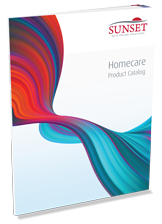For patients who use supplemental oxygen, portable cylinders can be a great way to allow them freedom to move around as they please. Here we’ll review the types of oxygen cylinders, how to determine the best size and key accessories.
What are the different sizes of Oxygen Cylinders?
Two sets of names are used to differentiate between oxygen cylinder sizes. The original set uses an alphabetical system, starting with A for the smallest size and E for the largest portable size. The new naming system begins with the letter “M,” for “medical,” followed by a number that signifies the amount of cubic feet of oxygen in that can be compressed into the cylinder. So the original B cylinder is now often referred to as an M-6 cylinder because it can hold 6 cubic feet of oxygen. Below, see the handy chart that matches oxygen cylinder sizes with their dimensions, capacity and accessories.
How do I know which size is best for my client?
The optimal size will depend on a client’s lifestyle and prescribed flow rate. The most common size is the M6. However, if the client is confined to a wheelchair, a larger E cylinder with a wheelchair bag may be more appropriate. Or, if he or she only leaves the house for short periods of time and weight is an issue, a smaller M4 cylinder may be better.
To determine how long an oxygen cylinder will last, there are several factors to consider: The patient’s prescribed flow rate in L/minute; the tank capacity in liters and whether they are using a regulator or a conserver. A regulator will provide continuous flow at a given flow rate. A conserver will sense when the patient is breathing and only expel oxygen when the patient is breathing in. Most conservers allow the tanks to last three to five times longer, but can be up to 10 times as expensive as regulators and are not reimbursed by insurance companies so they are not always worth the extra cost.
What accessories will my client need?
All patients should be supplied with a cylinder wrench and a “No Smoking” sign (it is recommended that patients hang a sign on all entrances to the building as well as in the room where the oxygen is being delivered).
For portable tanks, a carrier bag or cart is recommended. The most common bags range in sizes from M6, which can hold M6, M4 and M2 cylinders, up to E bags, which can be attached to a wheelchair or scooter. M6 bags often have straps to keep smaller cylinders in place. This can help reduce bag inventory by not having to stock separate bags for patients with small tanks. Many different styles are available with the most common being shoulder bags, backpacks and wheelchair bags. Bag type can be based on the patient’s preference; however, it is recommended that all bags are made of nonflammable materials.
The final accessory needed is a regulator or conserver. When selecting one, keep in mind that there are two main types of valves on oxygen cylinders. CGA 870 styles are used on tanks that are size E and smaller. CGA 540 style valves are used on larger, nonportable tanks. So you will want to select the type of regulator or conserver that matches the valve on your patient’s cylinder.









